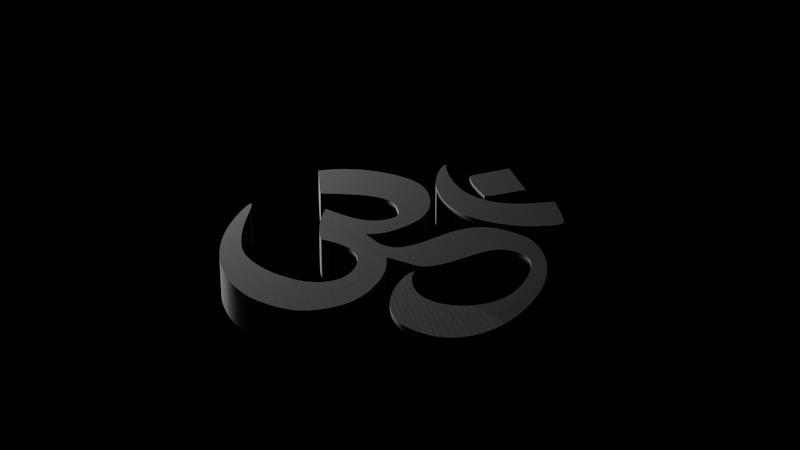Why do we need to know the Sanskrit names for yoga poses? Why not just call them by their translated name? The Sanskrit terms for poses are often difficult to remember, as well as a mouthful to pronounce. It can put some students off, as they shy away from the ‘yogic’ side of things and just want to have a good stretch.
However, knowing the Sanskrit words for yoga poses can be a link to the vibrant and living history of yoga, as well as giving students key clues to mastering the pose.
Here’s a lowdown on the ‘amazingness’ of the Sanskrit language and a whole host of reasons why it’s worth putting in the extra effort to get to know (and love) it.
1. A VERY ancient language
Sanskrit is an ancient Indian language, and, apart from the Basque language, every single language spoken in the Indo-European countries today has their origins in Sanskrit. TRUE.
Founder and director of the American Institute of Vedic Studies, Dr. David Frawley, says of Sanskrit that “by most conservative accounts it has been used continuously since 1500 BC; by more liberal accounts it was in use before 6000BC”. Arguably, Sanskrit is the earliest of the ancient languages, including Latin and Ancient Greek. The oldest literature in the world, The Vedas, was written in Sanskrit, and is still studied today in the same form as it was written, thousands of years ago.
2. A Beautifully organised language
The Sanskrit alphabet consists of 48 sounds, called ‘varnas’, meaning the ‘colour’ of language.
According to Gabriella Burnel, Sanskrit scholar, and resident YogaLondon expert, these sounds are “systematically structured to take you from the inner to the outer – literally – from the throat to the lips”. Also, amazingly, “even just sounding the vowels (known as ‘swaraah’ meaning self -luminous, shining by oneself) can have a calming and cleansing effect”.
Every word in the language is based on root syllables, which (Gabriella again), “holds within it the essence of the meaning of that word.” So, like modern-day German, words can be formed by linking root syllables together. “Take kr, which is the root of ahamkaara, samskaara, karma. The root ‘kr’ means ‘doing’, therefore you know that all these things involve ‘doing’. The root gives you a sense of the word on a deeper level.”
Sanskrit grammar is incredibly well-organised and apparently, scientists in the NASA space station love the Sanskrit language for its sound and its clear grammatical structure.
There are in fact a whole host of words in use today, such as avatar, candy, cot, crimson, jungle, orange and of course, yoga, which are directly descended from the original Sanskrit.
So, although Sanskrit may sound unfamiliar to Western ears, the language we speak now is directly linked to this ancient language.
3. The stories
Through learning the Sanskrit names of the asanas we practice, we are connecting, across the ages, to the yogis of the past, as well as the myths and legends of the Hindu culture, from which yoga originated.
The beautiful and advanced pose, Hanumanasana, is named after the monkey god, Hanuman. Hanuman was a son of the wind god Vayu, friend and servant of Rama, protagonist of the epic tale, The Ramayana.
The story goes that when the evil demon King Ravana kidnapped Rama’s wife, Sita, Rama enlisted the help of Sugriva, King of the monkeys, and his general, Hanuman. Hanuman found Sita and took the news to Rama and his brother Lakshmana, and a great battle with Ravana raged, during which Lakshmana was terribly wounded, and only the juice of a life-giving herb that grew in the Himalayas would save his life. Hanuman duly leapt across the seas in one leap, retrieved the herb, and saved Lakshmana’s life.
The pose, which is the lateral splits, represents the prodigious leap that Hanuman took to save the life of another.
Yoga students practising this pose today can channel their inner monkey god, being brave, selfless and extremely flexible! It is also a reminder that yoga isn’t all about practising for ourselves and our own glory, but should be the cultivation of discipline and self-care, that allows us to give more freely to those in need around us.
4. The heroes
When we do yoga, many of us often feel very far from heroic. We feel distinctly lacking as we struggle to locate our dorsal spines or touch our toes.
But the Sanskrit names of the poses act as a reminder to – in the words of M People – ‘search for the hero inside yourself’, and emulate the heroic qualities of the Hindu heroes and legends.
Take, for instance, the warrior Virabhadra, the namesake of the poses Virabhadrasana 1, 2 and 3. The three warrior poses are named after him and as we hold the poses and strengthen our feeble legs, we should think of him and emulate his mighty prowess.
Again, there is a story that comes with the poses. Virabhadra (vira, meaning ‘hero’ and bhadra meaning ‘friend’) was the warrior of the god and yogi Shiva. When Shiva’s wife, Sati, died due to the cruelty of her father Darksha at a party, Shiva sends Virabhadra to avenge her death.
- Virabhadrasana 1 represents the warrior appearing before Darksha by breaking through the ground, rising from the earth, brandishing a sword in both hands.
- Virabhadrasana 2 represents the moment that he spots his target from across the room.
- Virabhadrasana 3 symbolises the slaughtering of the guests at Darksha’s party, before beheading Darksha himself.
This rather bloodthirsty tale is also a symbolic one, as Shiva represents the higher self, Sati represents the heart and Darksha is the ego. So when we are teetering in Virabhadrasana 3, focusing like mad on balancing, we are really slaughtering our ego at the request of our higher self. All in a humble yoga practice…
5. The clues to yoga poses
Some of the names of the yogasanas (yoga + asanas) are literal in meaning. In this case, it is still worth studying the full name of the pose in order to gain valuable insight into the key elements of the pose.
Take Utthita Parshvakonasana, literally ‘extended side angle pose’. Broken down into its component parts the utthita means ‘extended’, parshva means ‘side’, kona means ‘angle’ and ‘asana’ is pose. There are many aspects to the pose as every part of the body is engaged, so the bent leg knee needs to be in line with the ankle, the back leg foot needs to press down to engage the thigh and so on. But the most important thing is that the side of the body is extended at an angle, i.e., in one continuous line from the little toe edge of the back foot, all the way to the fingertips of the top arm.
6. It’s fun!
The Sanskrit names are also fun and funny. One of the most important poses, Adho Mukha Svanasana means ‘downward facing dog’. This is a reminder that we need to have fun while doing yoga, emulating the natural bending and stretching of our pet dogs. A personal favourite, Pavana Muktasana, means ‘wind-relieving pose’. And it really works.
To conclude…
It’s not easy getting your head round the Sanskrit names of the poses, as I found out when I had to learn them all (very quickly) during my yoga teacher training course. But once you know them, they become an extra dimension of the pose, adding character and depth to the physical pose, and linking back, through the mists of time, to the very first yogis, who observed the spirit of each pose and named them, for us.
Gabriella Burnel perfectly explains her infectious love of Sanskrit below:
” The same feeling I get when visiting a sacred site like Stonehenge, walking through a forest of ancient trees, entering a church or a temple. That feeling of sanctity, magnificence and comfort – that’s what I feel when in the company of Sanskrit.”













